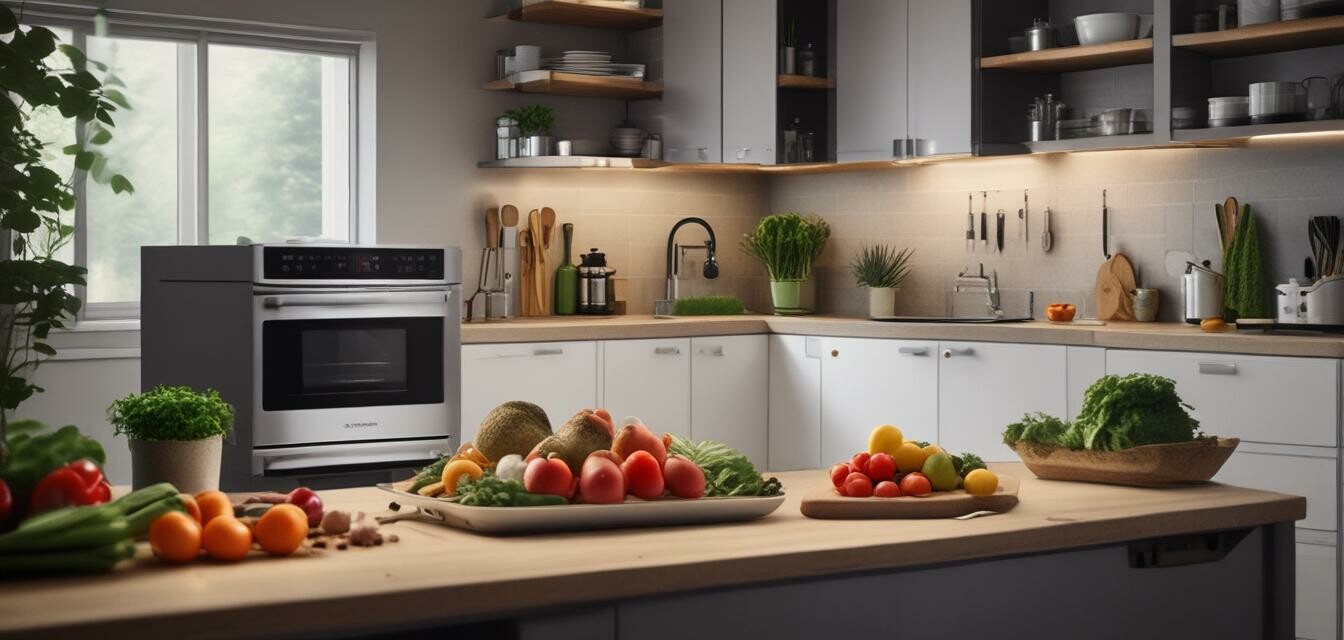
Eco-Friendly Cooking: How to Save Energy in the Kitchen
Key Takeaways
- Use energy-efficient appliances to reduce electricity consumption.
- Plan meals and make use of leftover ingredients to minimize energy use.
- Employ energy-saving cooking methods such as steaming and pressure cooking.
- Maintain appliances regularly for optimal performance and energy efficiency.
- Be mindful of your cooking habits—turn off appliances when not in use.
Cooking is a daily task for most homes, but did you know that it can significantly affect your energy consumption? By adopting eco-friendly cooking practices, you can save energy, reduce your utility bills, and contribute to a healthier planet. This article offers practical tips to help you use your kitchen appliances efficiently while preparing your favorite meals.
The importance of energy efficiency in the kitchen
Energy-efficient cooking not only reduces your carbon footprint but also offers multiple benefits, including:
- Lower energy bills
- Extended lifespan of appliances
- Reduced environmental impact
- Enhanced comfort in cooking
Choosing energy-efficient appliances
When it comes to kitchen cooking, selecting the right appliances is essential. Here are some tips for choosing energy-efficient options:
- Look for ENERGY STAR-rated appliances for reduced energy consumption.
- Opt for induction stoves instead of traditional electric or gas stoves.
- Invest in a microwave, which typically uses less energy than stovetops and ovens.
- Choose appliances with advanced features such as timers and temperature controls to optimize energy use.
Types of energy-efficient cooking appliances
| Appliance | Energy Efficiency | Key Feature |
|---|---|---|
| Induction Cooktop | High | Cooks food faster using magnetic induction |
| Microwave Oven | Moderate | Uses less energy for reheating |
| Convection Oven | High | Even heat distribution cooks food quickly |
| Pressure Cooker | Very High | Reduces cooking time significantly |
Tips for saving energy while cooking
Here are some practical tips to make your cooking process more energy-efficient:
- Plan your meals: Organizing your meal prep can save energy by reducing the number of times you use your oven or stove.
- Use a slow cooker: Great for cooking meals that take longer, which can be more energy-efficient than using an oven.
- Only preheat when necessary: Preheating your oven isn’t always required for every dish, especially for casseroles.
- Use lids: Cover pots and pans to cook food faster, reducing energy consumption.
- Batch cook: Make larger quantities of your favorite dishes and freeze leftovers for future meals.
Maintaining your appliances for energy efficiency
Regular maintenance of kitchen appliances helps ensure they work optimally, therefore conserving energy. Here are some maintenance tips:
- Clean stove burners regularly to ensure maximum efficiency.
- Defrost your refrigerator regularly to maintain its energy efficiency.
- Check seals on ovens and refrigerators to prevent energy loss.
- Keep the microwave clean to ensure effective energy use.
Conclusion
Incorporating energy-efficient practices into your cooking routine can lead to significant savings both on energy bills and in terms of environmental impact. By being mindful about how you use your kitchen appliances, you’ll not only make your cooking more sustainable, but also enhance your overall cooking experience. For more insights on optimizing energy-efficient appliances at home, check out our Tips and How-to Articles section.
Pros
- Reduced electricity bills from energy-efficient practices
- Less environmental damage
- Enhanced cooking experience with advanced appliances
Cons
- Initial investment for energy-efficient appliances might be high
- Learning curve for adapting to new cooking methods
